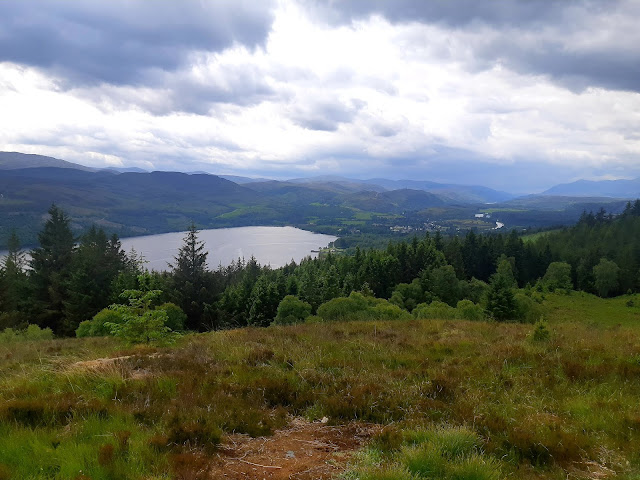Without a doubt I started (and finished) this trip with far more clothes than I needed, but only a little more than I wanted. Initially I was actually changing my shirt every couple of days, but in that stage I was also staying in nicer accommodation and had more frequent access to laundry facilities. Much as I love my "Not All Those Who Wander Are Lost" t-shirts, the cotton gets whiffy pretty quickly, especially in the armpits.It was somewhere along the Pennine way that I hit on my favourite combo, and just started wearing it every day, like the filth I am.
This consisted of bamboo singlet (which doesn't get all armpit stinky) and a long sleeve Kathmandu merino top which magically can be worn for days before it starts to smell. I found I needed the 2 layers to cut the wind, as the merino is actually very thin. Bottoms were dual layered as well, but for different reasons - just before leaving NZ I hiked the Humpridge Track with Dad and (TMI alert) I got awful thigh chafe. To combat this evil affliction I purchased a pair of non-padded cycle shorts from the good-ol' Ware-whare and over top of these wore a pair of similarly expensive linen shorts bought in a giant Tesco - very fashion-forward, I know! Sometimes I swapped out the cycle shorts for thermal leggings, if the weather was cold, but I actually often went bare legged even in freezing wind and rain (newsflash: legs are waterproof)Additional to the walking clothes were a pair of black trousers (the ones that got soaked in a hailstorm when I was too dumb to put my waterproofs on). After that event, and the subsequent 3 days of attempting to dry said trousers in damp campsites, I opted not to walk in them anymore, keeping them as a dry change of clothes for the evening. Believe me, you're much warmer if you change into warm dry clothes, even if you don't have the luxury of a shower.
I also had some extra tshirts, and a nice top that looked at least slightly smart to wear for going out.
Footwear - see precious post "Shoes" for the full rant, but suffice to say having good footwear is a must. The replacement hiking shoes were Oboz, and a vast improvement on the ill-fated Mountain Warehouse atrocities. I can't say they eliminated my blister problem entirely, but the these shoes took on my feet at their worst, and improved them while walking 25-35km a day. I'll be keen to see how my feet like them when I put them back on fully healed!
The distance did a total number on my socks, and I nearly wept with joy when mum's care package at Kirk Yetholm includes a pair of Icebreaker socks. I loved their anatomical design that actually matched foot shape. I wore liner socks under these, originally Kathmandu merino ones, but long use and multiple washings had rendered these into sandpaper. I replaced them with some super thin Bridgedale liner socks, that I actually greatly preferred. From what I've read it is better to have a liner of a different material to the outer sock, so that was also in their favour over the merinos.
Needless to say all these choices are very much "whatever works for you", as everyone has very different preferences when it comes to clothing and especially footwear. I'd recommend NOT working it out as you go along, but figuring out what works for you in advance. And plan to replace the socks every few hundred k's...




























